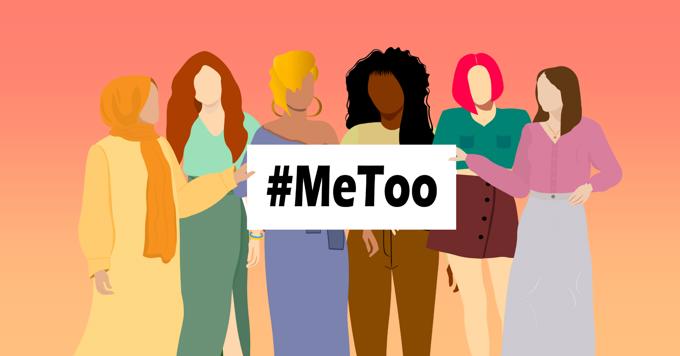It began as a moment of celebration. Across the globe, media stories heralded a new figure in the startup world: the “girlboss.” Ambitious, tenacious, and impeccably branded, the girlboss became shorthand for a generation of women founders and leaders unapologetically rising and breaking through the glass ceiling.
But the celebration didn’t last.
Almost overnight, the same platforms that elevated the girlboss turned on her. What started as a symbol of empowerment swiftly became a cautionary tale of overreach, failure, and critique. In the aftermath, one question lingered: Where did it all go wrong?
That’s what Janice Byrne, Assistant Professor of Entrepreneurship at Ivey Business School, and Antonio Paco Giuliani of the University of Bologna set out to uncover in their first-of-its-kind study. Using the girlboss as their lens, they analyzed more than 2,600 global news stories to examine how the media plays a pivotal role in shaping public perceptions of women founders and leaders. What they found reveals a powerful paradox: the same narrative devices the media uses to celebrate successful women can just as easily be turned to discredit them.
And it all begins with one word: hype.
When hype goes wrong
Defined as “a collective vision and promise of a possible future, around which attention, excitement, and expectations increase over time,” hype is often seen as a positive force for entrepreneurs. It’s a tool to rally support, attract investment, and inspire belief. And it works.
When used intentionally, hype can be powerful. Stories of bold visionaries, overnight success, and ambitious claims ignite investor enthusiasm and capture public imagination. The media, eager for narratives that inspire and sell, amplify these tales – but often through a particular frame.
“In the way they sculpt their words, emphasize certain things – while completely leaving out others – the media play a key role in actively shaping (or reinforcing) public perceptions toward a phenomenon. Founders are no exception,” said Byrne.
But framing cuts both ways. What begins as celebration can just as quickly turn to skepticism. This shift is part of what researchers call the hype cycle: a pattern that starts with a trigger event, builds through intense engagement and expectation, and ends either in sustained credibility or collapse. Or, as Byrne simplifies it: the boom and the bust.
The birth of the #girlboss
Few stories capture the hype cycle more vividly than that of the girlboss.
The term was popularized by Sophia Amoruso, founder of the online fashion retailer Nasty Gal. Starting from her bedroom in 2006, Amoruso transformed a small eBay store into a booming brand that, by 2012, generated more than $100 million in annual sales and employed over 200 people. In 2014, she released her bestselling memoir #GIRLBOSS, inspiring a generation of young women to pursue entrepreneurial success on their own terms.
But the momentum was short-lived. Within a year, reports of employee mistreatment surfaced, the company’s finances faltered, and by late 2016, Nasty Gal had filed for bankruptcy.
Amoruso’s downfall, however, didn’t end the movement. By 2017, the hashtag #GirlBoss had exploded to more than 2.5 million posts on Instagram, evolving from one woman’s story into a full-blown cultural phenomenon – one symbolizing a new era of ambitious, self-made women redefining entrepreneurship.
The rise of the girlboss
Between 2014 and 2017, media hype intensified and the girlboss reigned. Headlines at this time were glowing, and the media couldn’t get enough of a new kind of power player: ambitious, unstoppable, and flawlessly on brand. But beneath the celebration, a familiar pattern took shape. Through repetition and framing, the media built a single, polished archetype of what a “girlboss” was supposed to be:
- Exceptional: Mavericks and tireless overachievers, forever raising the bar.
- Highly Successful: Always winning, the girlboss inspires, accumulating accolades and collecting awards. But, her success isn’t defined by her career alone, but also by the grace with which she balances being a leader, partner, and mother.
- Visibly Perfect: Every look deliberate, every blazer crisp, idealized femininity prevails.
- Caring Community Builders: Success is never just for themselves, but for every woman watching.
“By framing women’s success through lenses like personalization, exceptionalism and essentialism, the media built a narrow ideal of the girlboss,” Byrne said. “It’s not that traits like balance or compassion don’t matter, but why do they dominate the story? Do we describe male founders the same way?”
The fall of the girlboss
As the saying goes, what goes up must come down. And the same was true for the girlboss.
After a surge of hype, media framing began to shift between 2018 and 2021. The narrative turned critical, and the same storytelling devices that once elevated these women were now used to tear them down.
Once praised for their appearance, girlbosses were recast as manipulative, accused of using femininity to deceive. Their drive and ambition, once celebrated, became evidence of arrogance or cruelty. And perhaps most damaging, their individual failures were treated as collective setbacks for women everywhere, reinforcing the notion that when one woman falls, all women fall with her.
Take Elizabeth Holmes, the American biotechnology entrepreneur convicted of fraud in connection with her company, Theranos. While the researchers agree that the media was right to expose wrongdoing, the press treatment of Holmes went beyond accountability. In addition to scrutinizing her crimes, coverage fixated on her “villainous” personality – her deep voice, steely demeanor, and enigmatic persona. She was cast as a woman who weaponized her gender to manipulate powerful men. As one article put it, “Holmes’s gender… attracted the attention of venture capitalists and powerful older, wealthy white men…”
For her transgressions, Holmes was not only branded a fraud but also a failure for women as a whole. The Economist declared, “Holmes’s tabloid-like saga means female founders have to work twice as hard.”
“To be clear, we do not excuse Holmes’s actions,” Byrne noted, “but is it fair to charge her with setting back all women entrepreneurs in Silicon Valley?"
The researcher points to the example of Sam Bankman Fried, who was convicted of acts of fraud and conspiracy with his company FTX, and was portrayed by the media as an individual "who made bad choices."
"The tech industry ‘moved on’ – business as usual – while Holmes’ story became a referendum on whether women founders could be trusted or not.”
While Holmes’s case is among the most visible, it’s far from unique. Her story, and many others that surfaced in the bust of the girlboss, reveal a deeper truth: media portrayals of entrepreneurs remain profoundly gendered. These narratives don’t just shape how women founders are perceived; they help define what women’s entrepreneurship is understood to be. And while the media represents only one player in the entrepreneurial ecosystem, it is a powerful one that influences how investors, consumers, and aspiring founders view who gets to be an entrepreneur, and what entrepreneurial success looks like.
What we say shapes what we see
For all those impacted (and impacting) entrepreneurial storytelling – be they founders or investors, journalists, researchers, accelerators, or policy makers – this study is more than a post-mortem on a media trend. It's a wake-up call about narrative power.
By showing how media coverage of the girlboss both celebrated and derailed women entrepreneurs, Byrne and Giuliani expose the continued role of gender norms shaping whose ventures get attention, which founders get funded, and what counts as "legitimate" entrepreneurship.
"It’s a tiring refrain, but the same patterns of gender bias keep showing up, albeit in more covert forms,” said Byrne. "The girlboss narrative seemed new and empowering, but it was built on the same old foundations – impossible expectations, personalization over competence, and the continued celebration of stereotypically feminine acumen. The seeds of discontent were sewn from the outset, the girl boss’s demise an inevitable eventuality: she was bound to fail. The real question isn't 'what's the next version of the girlboss?' It's: why do we need gendered categories for entrepreneurs at all?”
For leaders, the challenge now isn't to create better labels or more carefully curated role models. It's to question why certain stories get told, which entrepreneurs get hyped, and whose failures are treated as individual versus collective. It's to recognize that every framing choice we make and read – what gets emphasized, what gets left out, whose appearance gets described, whose ‘balance’ gets scrutinized – reinforces or challenges the status quo.
Only when we each take responsibility for the stories we amplify can we begin to reshape the entrepreneurial landscape for everyone.
For a deeper look at how media hype builds, and breaks, our ideas of successful women leaders and entrepreneurs, see Byrne and Giuliani’s study, The rise and fall of the girlboss: Gender, social expectations and entrepreneurial hype, published in the Journal of Business Venturing.











